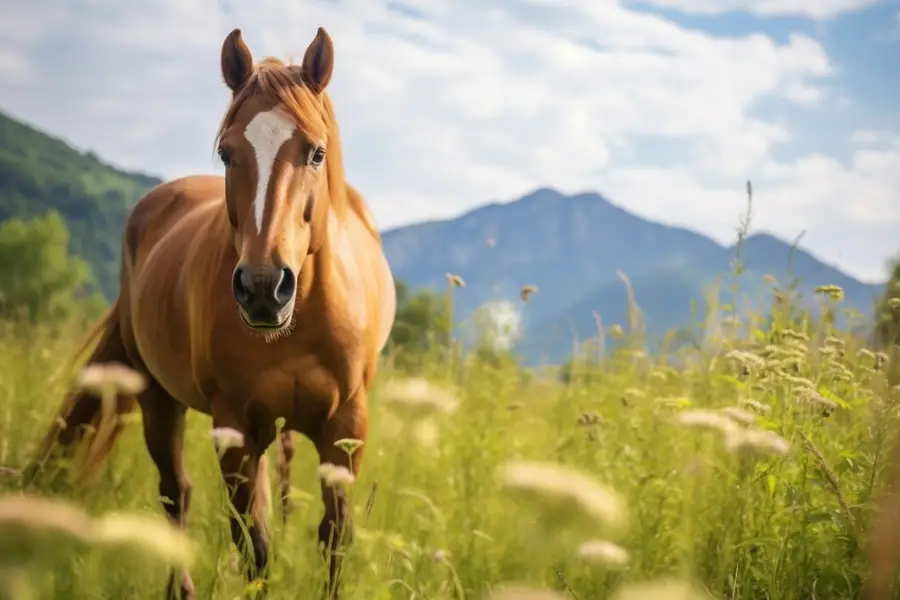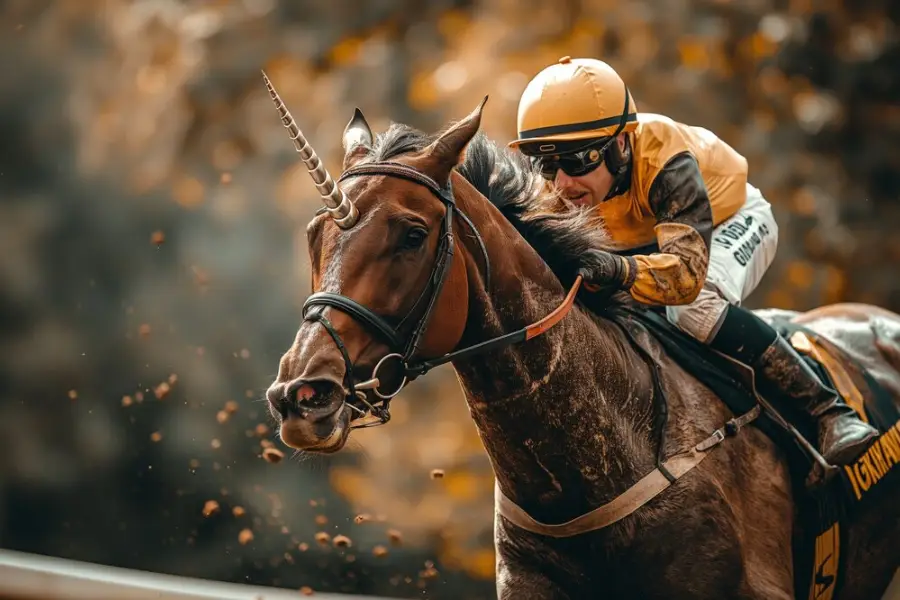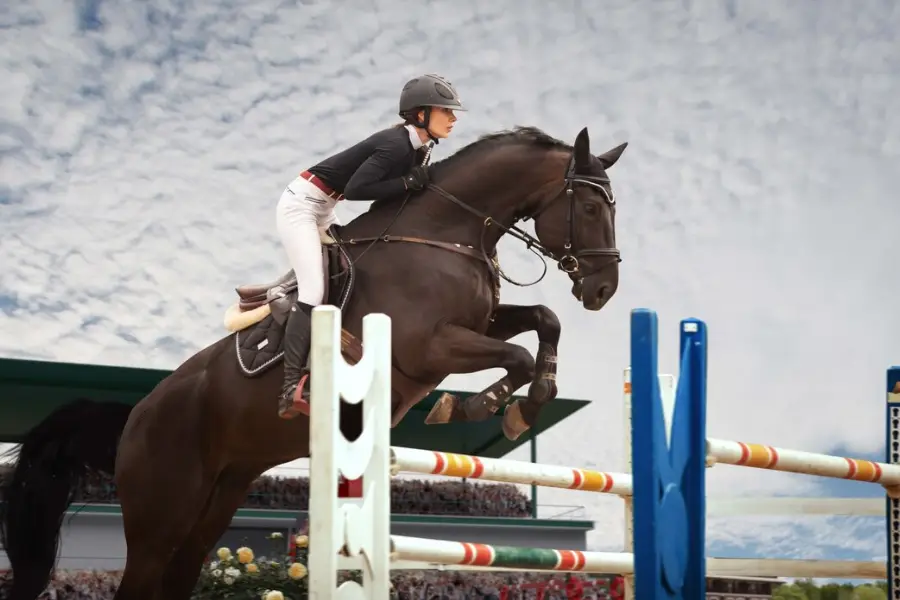How Fast Can A Horse Run? 8 Things You Should Know

How fast can a horse run? This question fascinates horse lovers and experts alike. It reveals not just the impressive speed of these animals but also insights into their unique physical traits. The speed of them can relate to genetics, conditions, training programs, and so on. Within a good living condition and training program, these horses can run faster for a long time. When ridden or without drinking, the speed of the horse is definitely slower. It might reach less miles than normal.
The article will uncover several surprising facts about horse speed that you might not know. These insights will give readers a new perspective on the remarkable capabilities of them. Let’s find out!
How Fast Can A Horse Run On Average?
The average of an ordinary horse or you can call domestic horses: 25 to 30 mph (40 to 48 kph). Nevertheless, horse gait also affects how quickly they move. Each gait offers different speeds and rhythms.
A horse moves in a two-beat rhythm when trotting. It creates a more deliberate and leisurely pace. The gallop has a rhythm of four beats, which allows horses to reach their highest speeds. This faster horse gait is ideal for short bursts of speed and competitive racing. Among domestic horses, the Appaloosa stands out for its impressive speed. This expensive breed has been recorded running at speeds of up to 41 mph (65.9 kph). These beautiful horse breeds’ exceptional speed makes them the fastest domestic horses in short sprints and racing events.
How Fast Can A Horse Run Without A Rider

A horse can achieve high speeds without a rider. In this case, their speed can reach up to 60 to 74km/h. A thoroughbred horse may run as fast as 40 mph (64 kph). This speed is often showcased in flat racing and sprint events.
However, a horse’s speed is impacted while it is carrying a rider. A thoroughbred’s speed can decrease to about 20 mph (32 kph) when ridden. It covers distances greater than a mile.
How Fast Can A Horse Run 10 Miles
Answering “how fast can a horse run” 10 miles depends on its gait and terrain. Horses walk at an average speed of about 4 miles per hour (6 km/h). This pace is sustainable for long periods. Ten miles at a trot on a relatively level course takes two hours.
At a trot, horses increase their speed to around 8 to 12 miles per hour (12 to 19 km/h). This faster pace allows horses to complete the distance more efficiently. It still maintains a steady rhythm. There’s a good balance between speed and endurance with this gait. It allows horses to cover longer distances more efficiently.
How Fast Can A Horse Run A Marathon

In the marathon setting, horses will often pace themselves to sustain energy over the entire course. In a remarkable example, a horse completed a staggering 90 miles in just 13 hours. A rider only fed him twice during a race.
Wild horses are incredibly agile and fast. For them to survive in the wild, these characteristics are crucial. A Mustang is said to be capable of reaching up to 54 mph (86.4 kph) according to records. Considering that it is only 1 mph slower than the fastest domestic horse breeds, like the Thoroughbred and the Quarter Horse.
How Fast Can A Horse Run Without Drinking?
Horses can run at high speeds, such as 60 to 74 kilometers per hour (37 to 46 miles per hour) for racehorses or up to 88.5 kilometers per hour (55 miles per hour) in peak conditions. However, dehydration can lead to reduced endurance and overall performance. The speed of horses might reach less than 30 miles without drinking for a long time.
How Fast Can A Horse Run With The Highest Speed?
Generally, the fastest speed ever recorded for a horse is 88.5 kilometers per hour (about 55 miles per hour). This incredible speed was achieved during a gallop. Typically, racehorses reach speeds between 60 and 74 kilometers per hour (37 to 46 miles per hour). American Quarter Horses are known for their top speed, but Thoroughbreds are notable for their fast sprinting over short distances.
Factors Impact A Horse’s Speed

Several key factors determine a horse’s speed. For example, a horse’s natural speed relates to genetics which mean types of horse. Age and health have great impacts on its speed. For instance, younger and healthier horses generally run faster. Fitness and training further enhance a horse’s ability to reach its top speeds. Additionally, the horse’s size, muscle development, and overall conformation affect how fast it can run.
One of the most critical factors is stride. Stride relates to the rhythm and length of a horse’s footfalls when they move. During a gallop, which is the fastest gait, the horse moves forward through a series of strides. The length and frequency of these strides are essential in determining the horse’s speed. Horse owners should be concerned health and training to achieve high speeds.
Tips For Training Fast Horse
How fast can a horse run also depends on the ways horse owners give them. With good conditions and effective communication, it can improve your horse’s speed. Here are some key tips to help you train your horse to run faster. The first step focuses on the preparation and acquaintances for your horse:
Use Voice Commands: Voice commands are a simple and effective way to encourage your horse to speed up. Horses can comprehend simple words. For example, they can understand when you say “trot” and “gallop”. They also respond to sounds like clucking or smooching. For instance, you can use “lope” or “run” to signal speed instead of mixing up terms.
Watch Your Tone: The tone and pitch of your voice matter. You should keep your commands gentle and calm. When horse trainers avoid yelling or showing frustration, your horse tends to have a positive response.
Incorporate Hand Aids: Use the reins as a way to signal your horse to speed up. Combine hand aids with leg aids for better results. Ensure that your leg aid is positioned correctly. It comes to rest right behind the girth strap of the saddle. This placement allows you to communicate effectively and gently nudge your horse forward.
Use Leg Aids Wisely: Leg aids should be coordinated with hand signals. They reinforce commands and help prompt your horse to move faster. Experiment with different combinations of leg and hand aids to find what works best for your horse.
Consider Spurs Carefully: Spurs can provide precise leg aids but should only be used by experienced riders. Misuse can cause discomfort or injury to your horse. If you’re new to using spurs, it’s best to practice their use under the guidance of a knowledgeable trainer.
The second step concentrates on training plans and keeping your horse on track. Physical fitness enhances stamina and endurance for the horse to sustain high speeds during traveling. Regular conditioning and targeted exercises build muscle strength and cardiovascular health. Here’s how to set it up:
Establish a Training Schedule: House owners should consider running horses daily for the first 8 weeks. After this period, you can reduce training frequency to four or five days a week.
Warm-Up: You should start each session with a 10-15 minute warm-up at a walk and trot. Exercise caution when guiding your horse in circles. You need to ensure that the circles are smooth and alternate with straight walking.
High-Intensity Intervals: Follow the warm-up with intervals of high-intensity exercise. For example, galloping or fast trotting. You might gallop for 2 minutes. Then, you can spend 2 minutes of walking or slow trotting.
Recovery Periods: Horse owners should set an adequate schedule for recovery. The periods might last 3-5 minutes. It can be a walk or trot which will help your horse’s muscles recover.
Cool-Down: End each session with a cool-down period of 10-15 minutes at a walk. This way will support your horse’s muscles to gradually return to a resting state.
Include Trotting in Training: Trotting is a crucial part of building speed. While trotting is slower than running, it is faster than walking. This is an essential phase for conditioning. Regular trotting will help improve your horse’s stamina and speed.
FAQs
The fastest horse in the world today is Winning Brew. It set the record with a top speed of 43.97 mph in 2008. The second one is Secretariat which was also a legendary Thoroughbred from the 1970s. Winning Brew reached speeds of up to 40.23 mph during his career. The third fastest horse is American Pharoah horse with the speeds around 37.55 mph.
Horses typically live between 25 and 30 years. However, some can live into their 40s with proper care and management.
A well-balanced diet for a horse is crucial for maintaining their health and performance. However, a diet will be different depending on training level and body condition. For your horse, you may want to think about premium forage like fresh grass or hay. You also can add grains like oats or feed pellets to meet their nutrient needs.
Final Thoughts
In conclusion, “how fast can a horse run?” involves more than just knowing top speeds. Each factor such as breed, training, gait, and stride, significantly affects a horse’s performance. It allows you to foster better practices in horse care and training. By this way, your horse can be nurtured in the right way and improve speed.



